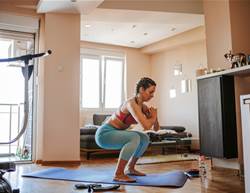Regular exercise supports longevity, from cardiovascular health to everyday strength. One simple move deserves a prime spot in the routine of women over 50, says family physician Dr Steven Bowers.
Why planks matter after 50
Daily strength work boosts almost every part of life. It makes functional tasks like carrying the shopping, opening jars and lifting heavy items easier. Planks train the whole body, with a special focus on the core.
“Core muscle fibers tend to shrink and become less supple as we age, which can put more strain on your back,” Dr Bowers has said. A stronger core improves balance and stability and helps you move through the day with less effort.
How to do a perfect forearm plank
- Set forearms on the floor with elbows directly under shoulders and forearms parallel.
- Place feet about shoulder width apart.
- Press hands and toes into the mat, lift the body and brace through glutes and quads.
- Form one straight line from head to heels.
- Do not lock the knees or arch the lower back. Keep the neck long by looking slightly ahead.
How long to hold it
Start with 20 seconds. “As you get more comfortable and your core gets stronger, hold the plank for as long as possible without sacrificing form or breath,” Dr Bowers noted.
Quick tips
- If shoulders feel uncomfortable, widen the stance or lower the knees while keeping a straight line from head to knees.
- Breathe steadily. If form slips, rest, then repeat.
- Aim for 2–3 sets most days, pairing planks with a short walk or a few bodyweight moves.
Simple, scalable and effective, the plank is a smart addition to any midlife routine and exactly what the core has been waiting for.









